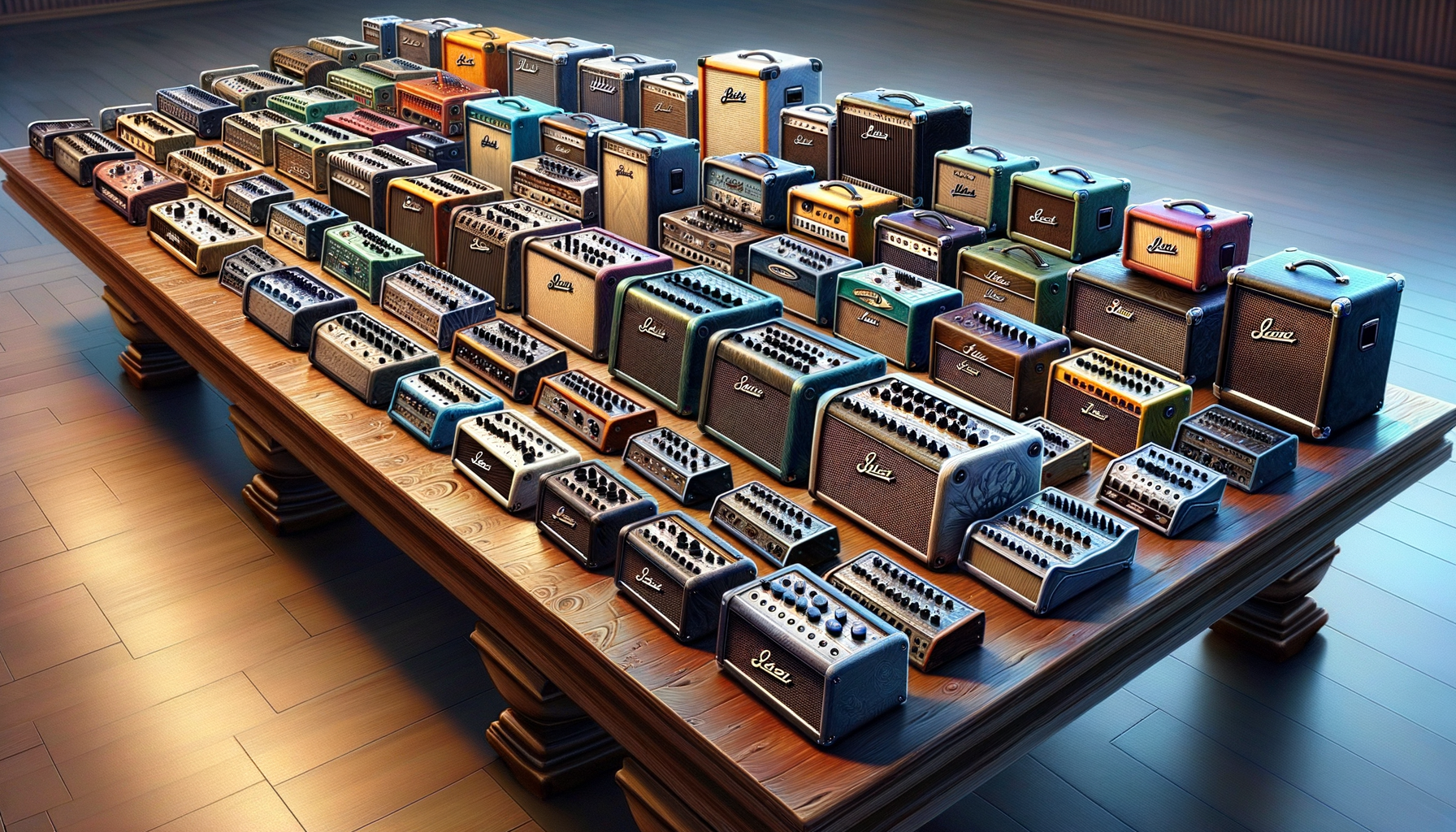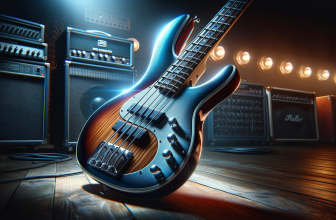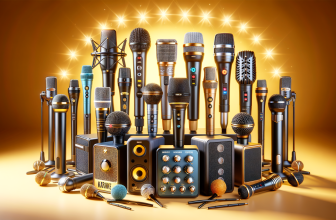
Are you on the quest to find the ultimate tool to recreate the magic of legendary guitar tones? Enter the world of amp modelers, where technology meets tradition to emulate the sounds of classic amplifiers at a fraction of the cost and size. Whether you’re looking to practice at home without waking the neighbors, record directly into your computer, or perform live with an entire palette of tones at your disposal, the right amp modeler can revolutionize your playing experience. But with countless models to choose from, how do you pinpoint the one that will strike the perfect chord with your needs?
Our Top Picks
Our #1 Top Pick: Line 6 Helix
The Line 6 Helix stands out in the amp modeler space for its exceptional sound quality, user interface, and flexibility. With its multi-color LCD displays and touch-sensitive footswitches, the Helix provides a user experience paralleled by few. It boasts an impressive array of over 200 amp, cabinet, and effect models, making it an ideal choice for those seeking versatility. Helix also shines with its deep editing capabilities and robust I/O options, including both USB recording and Variax integration. Its HX modeling engine delivers dynamic, responsive tones that rival the real thing and its sturdy construction makes it equally at home on the stage or in the studio.
Pick #2: Fractal Audio Axe-Fx III
For the studio musician or touring professional demanding top-of-the-line performance, the Fractal Audio Axe-Fx III reigns supreme. With unmatched sound quality and processing power, this rack-mountable unit has become a staple among professional guitarists across genres. The Axe-Fx III offers a highly detailed replication of hundreds of amp models and effects, with a depth of customization that allows for endless tweaking. It also integrates seamlessly with Fractal Audio’s own foot controllers for onstage use. Its full-color display and intuitive interface make navigating through its extensive feature set a breeze.
Pick #3: Kemper Profiler Stage
Blurring the line between amp emulation and amp creation, the Kemper Profiler Stage allows guitarists to ‘profile’ their own amplifiers to create digital snapshots of their sound. This floorboard modeler includes the acclaimed profiling technology of its rack and head counterparts in a more gig-friendly format. The Profiler Stage provides a vast library of factory rigs, with the added flexibility of sharing and downloading an ever-growing number of profiles from other users online. The built-in effects are studio-grade, and the performance mode is specifically designed to handle live settings with ease.
Pick #4: Boss GT-1000
The Boss GT-1000 floorboard is a formidable contender, offering Boss’s proprietary AIRD (Augmented Impulse Response Dynamics) technology. It serves to faithfully recreate analog amp sounds with a level of responsiveness that feels like playing through an actual tube amp. The GT-1000 is also packed with a comprehensive range of effects derived from the acclaimed Boss 500 series. With its straightforward interface, onboard Bluetooth for wireless editing via smartphone, and support for external impulse responses, the GT-1000 strikes a balance between innovation and user-friendliness.
Pick #5: Neural DSP Quad Cortex
As a relative newcomer to the scene, the Neural DSP Quad Cortex is quickly earning a reputation for its groundbreaking approach to amp and effects modeling. It features a sleek, touch screen interface and a powerful quad-core processor, which enables the capture of not only amplifiers but also cabinets, microphones, and rooms. This compact, floor unit is loaded with high-fidelity amp models, robust cabinet simulations, and a multitude of effects. It’s also one of the first modelers to offer cloud-based preset sharing, uniting a community of users in their tone-seeking journey.
What to Know Before You Buy
- Purpose: Understand what you need from an amp modeler. Is it for practice, live performance, recording, or all the above? Your use case will greatly influence your choice.
- Modeling Technology: Familiarize yourself with terms like “digital modeling,” “profiling,” and “impulse responses” as these are commonly used technologies that form the core of amp modelers.
- Sound Quality: High-quality sound is paramount. Listen to audio samples or, if possible, try out the modeler in person to gauge its authenticity to real amps.
- Flexibility: A wide range of amps, effects, and customization options make a unit more versatile. Consider the genres you play and whether the modeler can accommodate them.
- Connectivity: Look for options like USB, MIDI, and direct recording capabilities, especially if you’re a recording artist or need to integrate with other gear.
- User Interface: A straightforward and intuitive user interface is vital. You don’t want to get bogged down in complex menus during a performance.
Factors to Consider Before Buying
- Build Quality: Durability is key, especially for touring musicians. Solid construction and quality components can withstand the rigors of the road.
- Portability: If you plan to move your unit frequently, consider its weight and size. Some modelers are designed to be more portable than others.
- Community and Support: A strong user community can be an invaluable resource for sharing tones, tips, and support. Manufacturer customer support is also important for troubleshooting and updates.
- Budget: Prices range from affordable to high-end. Determine your budget and try to find the best balance between cost and features.
- Software Updates: With technology constantly advancing, look for modelers that offer frequent software updates to improve functionality and offer new features.
- Integration with Existing Gear: Consider how the amp modeler will fit into your current setup. Check compatibility with footswitches, expression pedals, and the rest of your signal chain.
Why Trust ChooseRight?
At ChooseRight, we understand the gravity of making an informed decision when investing in gear that could be central to your sound. To compile our list of best amp modelers, we performed extensive research that included reviewing products, combing through thousands of user reviews, and seeking feedback from seasoned professionals who have real-world experience with these units. Our commitment to unbiased and comprehensive reviews means we provide insight you can count on when selecting the right gear for your music journey.
Finishing Thoughts
Choosing the best amp modeler is a deeply personal decision that hinges on a balance of sound quality, usability, and practicality. Whether your priority lies in capturing the essence of vintage amplifiers or exploring the frontiers of digital technology, there’s a modeler on this list to suit your needs. Remember to take your time, do your research, and trust your ears—you’re not just buying a piece of equipment; you’re investing in your musical expression.
Frequently Asked Questions
What is an amp modeler?
An amp modeler is a device or software that digitally simulates the sound of various guitar amplifiers, cabinets, and often effects as well. This allows guitarists to access a wide range of tones without needing multiple physical amplifiers.
Can an amp modeler replace a real amplifier?
While amp modelers aim to closely replicate the sound of real amplifiers, some purists argue that they can’t completely replace the nuanced sound and feel of physical amps. However, for many users, especially in recording and live settings with sound reinforcement, amp modelers can be a practical and convincing alternative.
How do I choose the best amp modeler for my needs?
Consider your primary use case (live performance, studio recording, practice), the genres you play, the specific amp and effect tones you’re looking for, the user interface and ease of use, connectivity options, and your budget. You may also want to read reviews and try out a few different models before deciding.
Are amp modelers easy to use?
Most modern amp modelers are designed with user-friendly interfaces, but there can be a learning curve, especially for more advanced models with extensive features. It may take time to familiarize yourself with the software or hardware and tweak the settings to get your desired tone.
Do amp modelers work well in a live setup?
Amp modelers can be very effective in a live setup, offering versatility and ease of use. Many are designed to interface directly with PA systems, and some models have features specifically for live use, like footswitches for changing presets or built-in looper functions.
What’s the difference between a profiling amp and an amp modeler?
A profiling amp is a type of amp modeler that can “profile” or capture the sound of a real amplifier and then replicate it digitally. Traditional amp modelers may rely more on pre-designed simulations and algorithms to achieve various tones.
Can I use an amp modeler for recording guitar?
Yes, amp modelers are an excellent tool for recording guitar. They offer a wide range of tones and are generally easier to set up for recording than miking a physical amp. Many have USB connectivity for direct recording to a computer.
Do I need a special type of guitar to use with an amp modeler?
No, you can use any electric guitar with an amp modeler. Some modelers may also work with acoustic-electric guitars and basses.
Will using an amp modeler improve my guitar tone?
An amp modeler can offer a wider range of tones and may also provide higher-quality sound than a lower-end physical amp, but ultimately, the improvement to your guitar tone will depend on how well you dial in the settings to match your playing style and preferences.
Are there any disadvantages to using an amp modeler?
The main disadvantages could include the potential for a less “authentic” feel compared to tube amps, reliance on power sources and technology which can introduce complex problems, and sometimes a higher initial cost than a simple amp. Additionally, the sheer number of options and settings available may overwhelm some users.







